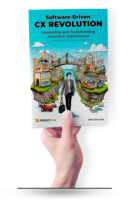Measuring product experience can aid an organization in identifying weak points in its product or service. Customers who have a negative experience may be less loyal and more likely to turn to competitors. Measuring can uncover potential problems with design, features, user-friendliness, or customer support where improvement is necessary. Measuring product experience can aid an organization in comprehending how customers utilize a product and what inspires them to regularly use it. Separating the elements that customers perceive as advantageous and captivating permits the organization to design improved user experiences and strengthen customer loyalty. In today’s highly competitive environment, it’s crucial to provide customers with a superior product experience. Measuring the quality of an organization’s products against those of its competitors helps identify areas that need improvement. Enhancing product experience can boost an organization’s standing in the marketplace and increase customer loyalty. Measuring product experience can offer valuable feedback for product innovation and development. Identifying customer needs allows an organization to adapt its product, introduce new features, or enhancements to the market that align with customer expectations. Exploring the product experiences of existing customers can provide valuable insights into their needs, preferences, and challenges they face when using current products. This feedback can serve as the basis for developing new products or services that better meet their expectations and deliver greater user value. Developing prototypes of new products or services and testing them with a target group of customers allows you to get direct feedback on their product experience. Prototype testing can reveal gaps, identify areas for improvement, and help create easy-to-use and engaging solutions. Involving users in testing new products or services allows you to get real feedback on their product experience. User testing allows you to identify problems, bugs, and obstacles that customers may encounter when using a new product. This feedback can lead to iterative improvement and optimization of the product before it is released. When developing new products or services, it is important to measure customer satisfaction and monitor how the product is meeting user expectations. Regular measurement and monitoring of the product experience can identify areas where adjustments need to be made and allow the development team to respond to customer needs. A continuous cycle of feedback and iterative development is key to ensuring a high-quality product experience. Listening to customers, gathering feedback, and incorporating it into product development helps ensure that the product best meets customers’ needs and wants. What is Product Experience (PX)?
Why is measuring product experience important?
Identification of problem areas:
Improving User Engagement:
Improving Competitiveness:
Innovation and product development:
Product experience is essential in the development of new products and services.
Customer Research:
Prototyping and testing:
User testing:
Customer Satisfaction and Measurement:
Iterative Development and Feedback:
Product Experience (PX) refers to all the interactions, impressions, and emotions that customers experience when using a particular product or service. This includes the buying process, product usage, customer support, and overall perception of the product’s value.
Or Call Us Directly: +420 777 661 368
Product experience can play a key role in the development of new products or services. Here are some ways to use it:
Measuring the product experience can include various methods such as customer satisfaction surveys, questionnaires, user testing, customer behavior analysis, or customer reviews. It is important to collect customer feedback on a regular basis and use it to continuously improve the product and user experience.

